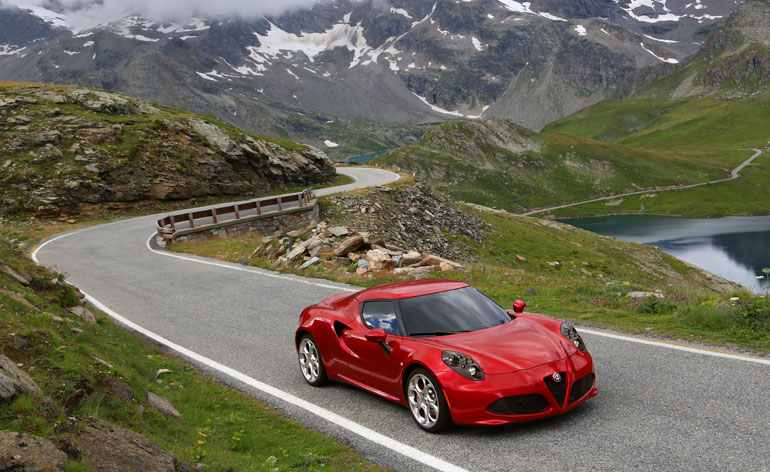
Aside from its limited-run 8C ‘supercar’, launched in 2007, it’s been decades since Alfa made a car that fully lived up to its sporting heritage. That all changes this month, as the enigmatic Italian brand takes official orders for its great-looking new 4C, with deliveries expected in late 2014.
The new 4C isn’t just pretty. With its lightweight body of carbon fibre – normally the reserve of supercars – and a driver-focused mid-engine rear wheel-drive two-seater layout, the affordable £45,000 sportscar really does rival both the Lotus Elise and Porsche Cayman.
The heart of the 4C may be a relatively small four-cylinder 1750cc petrol engine, but 240bhp in a vehicle weighing only 920kg powers it from 0-62mph in 4.5 seconds, with a 160mph top speed, while still recording a reasonable 41.5mpg and a 157g/km CO2 rating.
It’s hard to be graceful getting in and out of something so low slung, but once inside, a good driving position is easy to find. Alas, there’s no manual gear stick, as the 4C relaunches Alfa globally – including in the US, where ‘stick shifts’ are rare. It does offer an automatic six-speed dual-clutch gearbox with steering wheel-mounted plastic paddles to shift up and down and Alfa’s usual toggle-switch driving modes, plus a fourth ‘race’ setting to allow quicker throttle responses and gearshifts and less electronic safety intervention.
Step on the aluminium accelerator and the car flies forward with a noticeably loud engine roar, specially tuned to emphasise the low frequencies. It really does sound great, even if engine ‘notes’ aren’t usually your thing. Beyond the aural feedback, each change comes with a pleasing physical shove in the back when undertaken at speed. Meanwhile the sharp digital driver display not only makes it clear when the redline is approaching – by turning the analogue-style rev band yellow – but also indicates which gear you’re in, which can be handy when getting carried away on twisty mountain roads (easy to do).
The quick steering is mechanical, so you know just what the wheels are doing. And as the car is only 3,989mm – with front corners clearly visible – it’s easy to position on the road and feel in control. Roll and pitch through corners is minimal. And watching other cars at the launch event reveals just how well the 4C’s curvy low-and-wide proportions look when moving.
There are downsides, though. The on-road ride is unforgiving, letting all inside know in no uncertain terms where the bumps live. On test, only the optional 18-inch front wheels and 19-inch rears were available; the standard 17/18s set-up should be better. Flick the driving mode toggle switch to ‘natural’ and ‘auto’ for poor road surfaces and it’s more tolerable. Because the steering is unassisted, it doesn’t stiffen up at speed like many modern systems, so it can seem over-light at high straight-line speeds and susceptible to twitchiness on uneven roads. A firm grip is required.
Receive our daily digest of inspiration, escapism and design stories from around the world direct to your inbox.
The rear view is terrible – £420 optional parking sensors are a must, unless you reverse using Jedi skills alone. The plain black headlamp surrounds look cheap, so you’ll need the £1,600 real carbon fibre versions. And the 110-litre boot won’t take much more than a weekend bag. Lastly, the stripped-out interior – albeit for laudable weight-saving reasons – is in places badly packaged, especially where the sharp edge of the centre console intrudes into the passenger footwell. This is no ‘date car’, unless your date likes to wear Alcantara shin pads and ear defenders.
But that’s not the point. The 4C is all about the driver and the driving experience, delivered through hi-tech and low weight. Choose the right roads and company (your own, or a like-minded soul with his eye on a go in the driver’s seat) and the 4C will really make you smile. A lot of 3,500 will be produced each year to keep things exclusive, and a faster ‘Stradale’ version, plus a targa open-top variant, should follow. Maybe this really will be Alfa’s comeback car.

The quick steering is mechanical, so you know just what the wheels are doing. And as the car is only 3,989mm – with front corners clearly visible – it’s easy to position on the road and feel in control
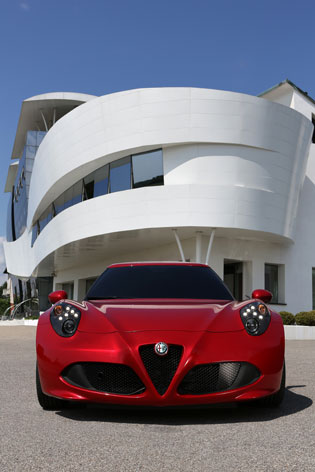
It’s hard to be graceful getting in and out of something so low slung, but once inside, a good driving position is easy to find. The 4C is all about the driver and the driving experience, delivered through hi-tech and low weight

The heart of the 4C may be a relatively small four-cylinder 1750cc petrol engine, but 240bhp in a vehicle weighing only 920kg powers it from 0-62mph in 4.5 seconds
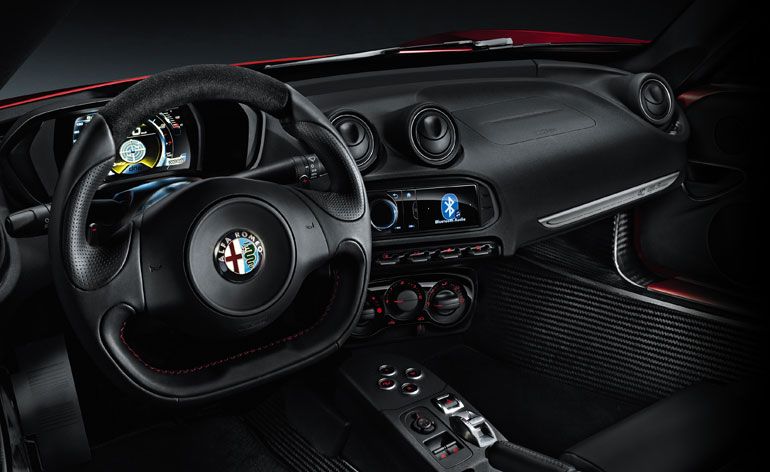
The sharp digital driver display not only makes it clear when the redline is approaching – by turning the analogue-style rev band yellow – but also indicates which gear you’re in
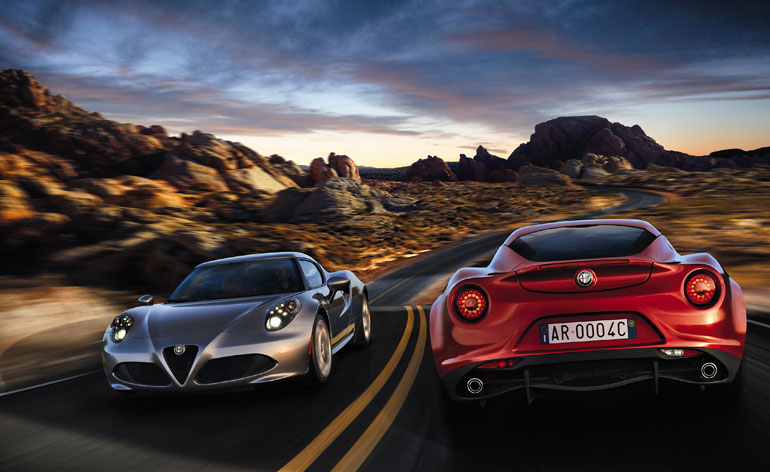
Step on the aluminium accelerator and the car flies forward with a noticeably loud engine roar, specially tuned to emphasise the low frequencies. It really does sound great, even if engine ‘notes’ aren’t usually your thing
Guy Bird is a London-based writer, editor and consultant specialising in cars and car design, but also covers aviation, architecture, street art, sneakers and music. His journalistic experience spans more than 25 years in the UK and global industry. See more at www.guybird.com
-
 ‘I want to bring anxiety to the surface': Shannon Cartier Lucy on her unsettling works
‘I want to bring anxiety to the surface': Shannon Cartier Lucy on her unsettling worksIn an exhibition at Soft Opening, London, Shannon Cartier Lucy revisits childhood memories
-
 What one writer learnt in 2025 through exploring the ‘intimate, familiar’ wardrobes of ten friends
What one writer learnt in 2025 through exploring the ‘intimate, familiar’ wardrobes of ten friendsInspired by artist Sophie Calle, Colleen Kelsey’s ‘Wearing It Out’ sees the writer ask ten friends to tell the stories behind their most precious garments – from a wedding dress ordered on a whim to a pair of Prada Mary Janes
-
 Year in review: 2025’s top ten cars chosen by transport editor Jonathan Bell
Year in review: 2025’s top ten cars chosen by transport editor Jonathan BellWhat were our chosen conveyances in 2025? These ten cars impressed, either through their look and feel, style, sophistication or all-round practicality
-
 New Porsche Cayenne Electric makes a case for a sporting life with lashings of technology
New Porsche Cayenne Electric makes a case for a sporting life with lashings of technologyThe next-gen Cayenne gets its first all-electric model, a mighty SUV that’s also the first Porsche with wireless charging
-
 All the new electric cars and concepts revealed at Munich’s IAA Mobility 2025
All the new electric cars and concepts revealed at Munich’s IAA Mobility 2025Munich’s alternative motorshow is now in its third iteration, combining a traditional exhibition space with a conference and large-scale public activations on the streets of the city
-
 KAMManufaktur transforms the 1960s-era Porsche 912 into a refined restomod GT
KAMManufaktur transforms the 1960s-era Porsche 912 into a refined restomod GTThe KAMM 912T is a restomod Porsche for the more discerning collector, a rebuilt and re-engineered car that favours analogue feel and simplicity over all-out power
-
 All the best bits from Goodwood Festival of Speed 2025
All the best bits from Goodwood Festival of Speed 2025As car makers switch their allegiance to the sunny West Sussex countryside as a place to showcase their wares, a new generation of sports cars were sent running up that famous hill
-
 This Porsche surfboard collaboration captures the spirit of 1970s Southern California
This Porsche surfboard collaboration captures the spirit of 1970s Southern CaliforniaThe Porsche 911 Carrera RS 2.7 is the inspiration for the company’s second collaboration with California’s Almond Surfboards, featuring a custom-made board and limited-edition apparel and accessories
-
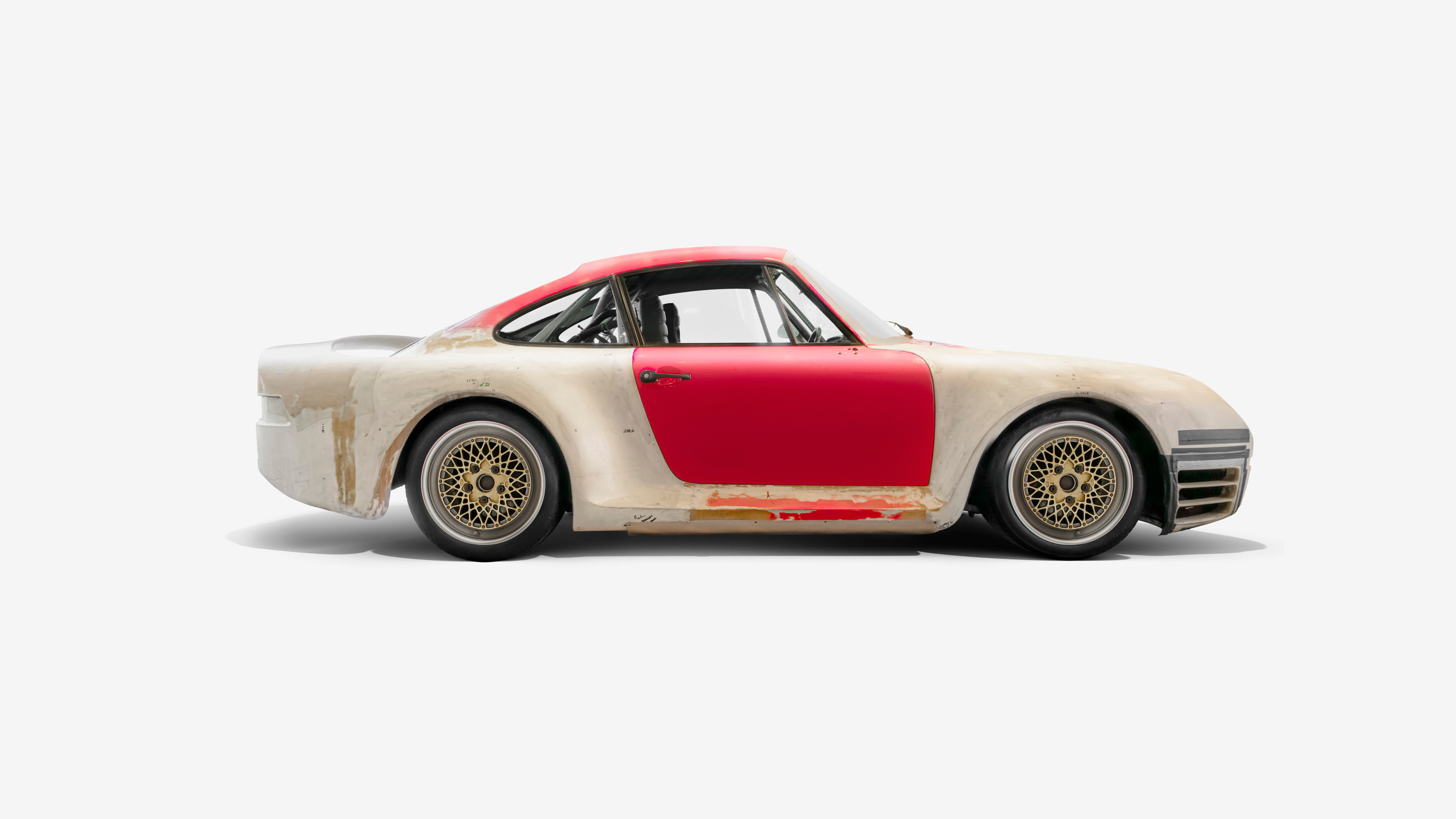 ‘Wundercar’ celebrates the ineffable aura of the Porsche 959, the first true hypercar
‘Wundercar’ celebrates the ineffable aura of the Porsche 959, the first true hypercarCurated by London creatives INK, ‘Wundercar’ is a London exhibition dedicated to the image and influence of Porsche’s seminal 959, a true icon of 1980s engineering
-
 The Porsche 911 Spirit 70 harks back to the aesthetic and ethos of the 1970s
The Porsche 911 Spirit 70 harks back to the aesthetic and ethos of the 1970sAs part of Porsche’s Heritage Design strategy, the company has launched a new special edition, the Porsche 911 Spirit 70 convertible
-
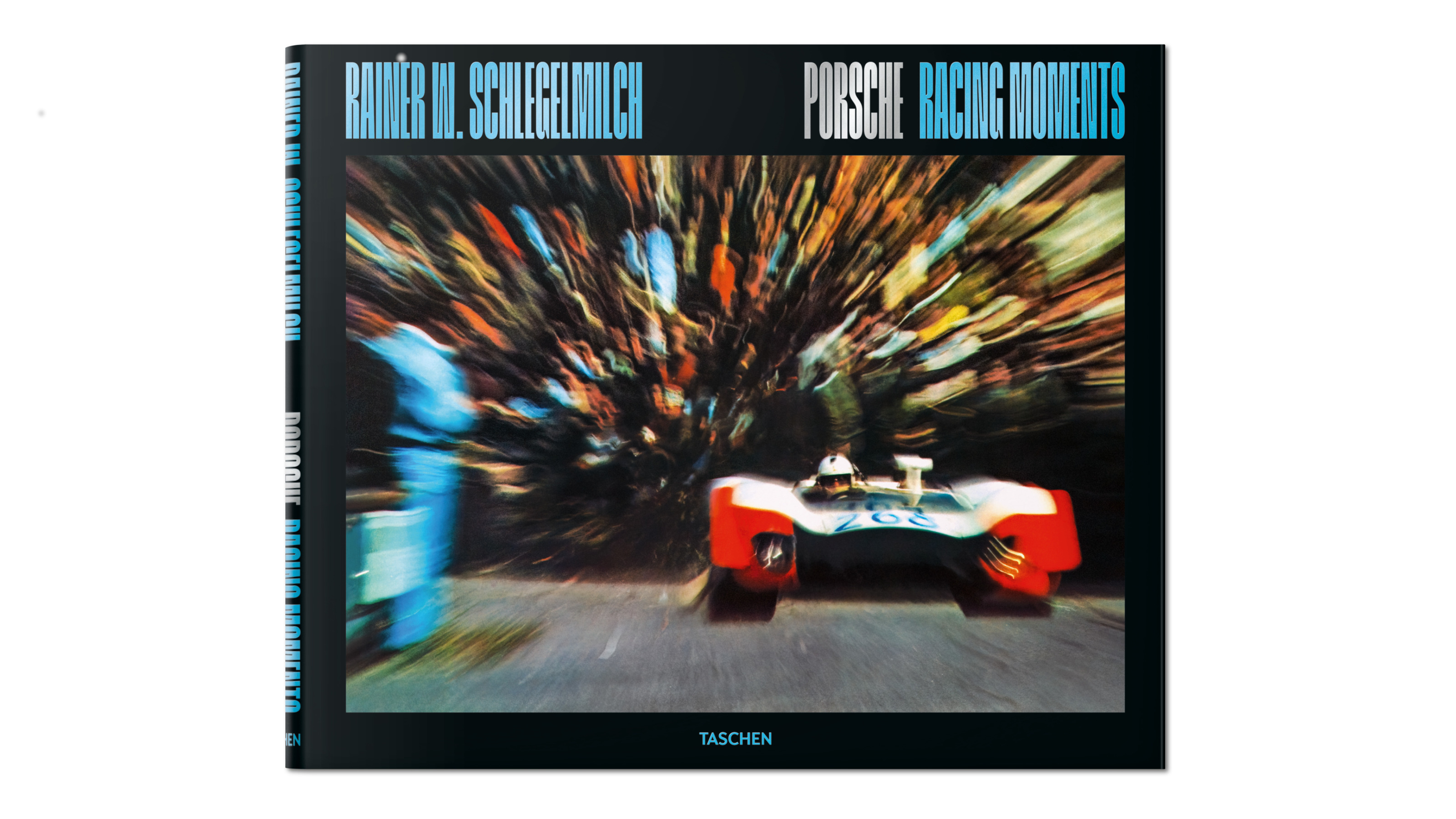 Rainer W. Schlegelmilch's Porsche photography showcases the aesthetics of speed
Rainer W. Schlegelmilch's Porsche photography showcases the aesthetics of speedTaschen's new edition of Rainer W. Schlegelmilch’s collected imagery from a quarter of a century spent following Porsche racing highlights historical machines, emotive camera technique and major moments on the track